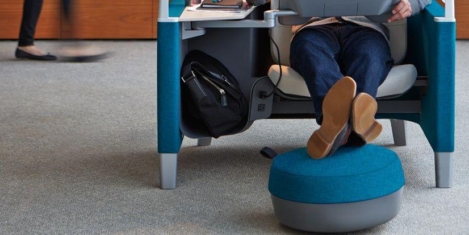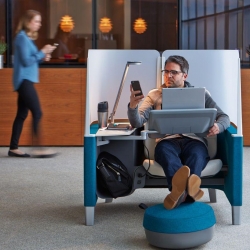To provide the best experiences, we use technologies like cookies to store and/or access device information. Consenting to these technologies will allow us to process data such as browsing behaviour or unique IDs on this site. Not consenting or withdrawing consent, may adversely affect certain features and functions.
The technical storage or access is strictly necessary for the legitimate purpose of enabling the use of a specific service explicitly requested by the subscriber or user, or for the sole purpose of carrying out the transmission of a communication over an electronic communications network.
The technical storage or access is necessary for the legitimate purpose of storing preferences that are not requested by the subscriber or user.
The technical storage or access that is used exclusively for statistical purposes.
The technical storage or access that is used exclusively for anonymous statistical purposes. Without a subpoena, voluntary compliance on the part of your Internet Service Provider, or additional records from a third party, information stored or retrieved for this purpose alone cannot usually be used to identify you.
The technical storage or access is required to create user profiles to send advertising, or to track the user on a website or across several websites for similar marketing purposes.
 A problem shared may be a problem halved but, according to a new report, many UK office workers can’t discuss work with their nearest and dearest without them switching off. The survey by CWJobs claims couples are more likely to know the PIN to their partner’s phone (40 percent) or who their favourite band is (38 percent) than understand what they do for a living (30 percent). Three quarters of the workers surveyed said their spouse could not explain their job to another person. (more…)
A problem shared may be a problem halved but, according to a new report, many UK office workers can’t discuss work with their nearest and dearest without them switching off. The survey by CWJobs claims couples are more likely to know the PIN to their partner’s phone (40 percent) or who their favourite band is (38 percent) than understand what they do for a living (30 percent). Three quarters of the workers surveyed said their spouse could not explain their job to another person. (more…)






 New research has been published aimed at understanding trends, practices and priority areas for improving employees’ experience and creating better places to work. The report,
New research has been published aimed at understanding trends, practices and priority areas for improving employees’ experience and creating better places to work. The report, 
















 New research from Aon, claims that flexible benefits programmes continue to be popular within organisations, despite communication challenges and a potential impact from 2018’s
New research from Aon, claims that flexible benefits programmes continue to be popular within organisations, despite communication challenges and a potential impact from 2018’s 







February 5, 2020
Bridging the gap between the reality and perception of engagement
by Callum Gill • Comment, Flexible working, Technology, Workplace